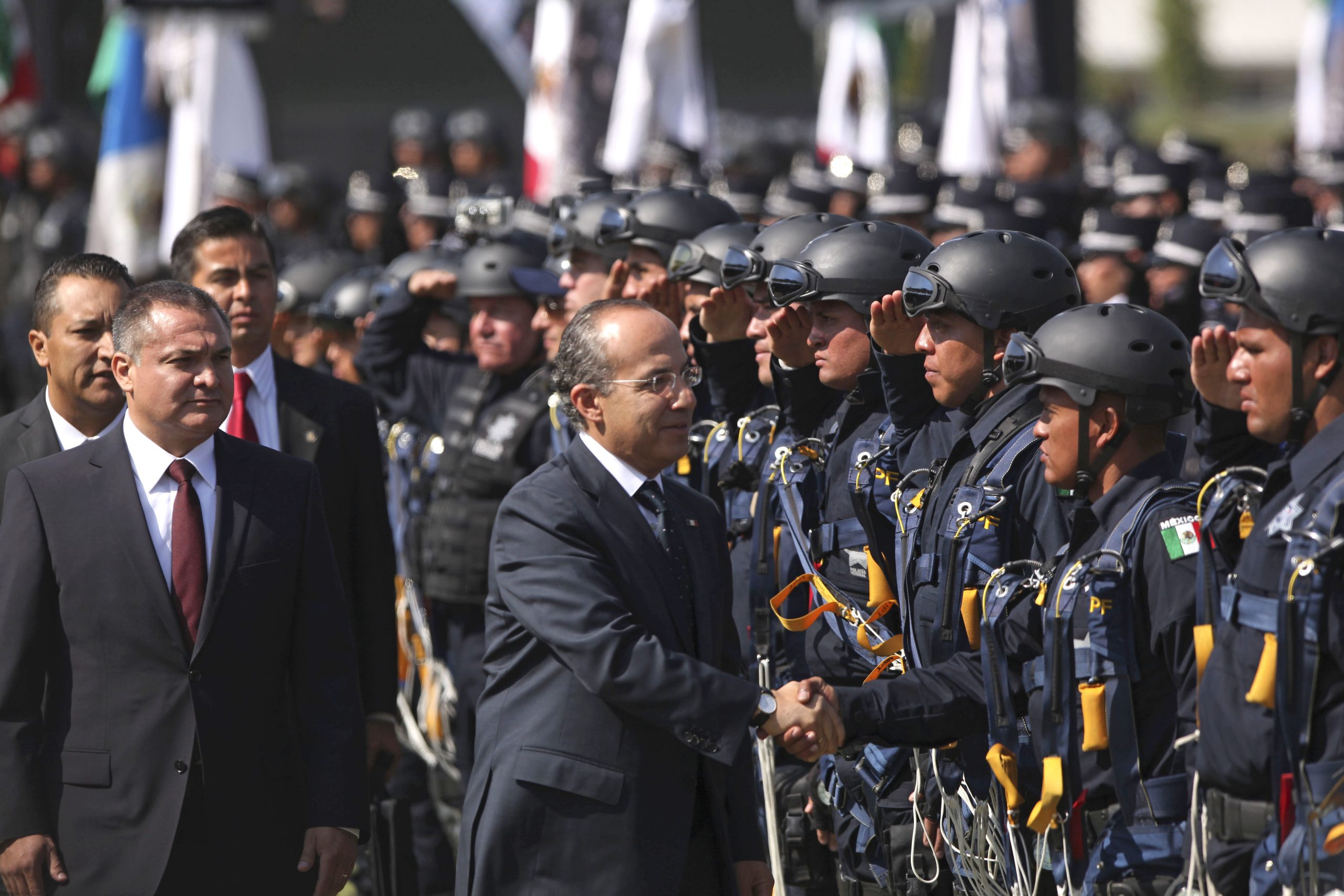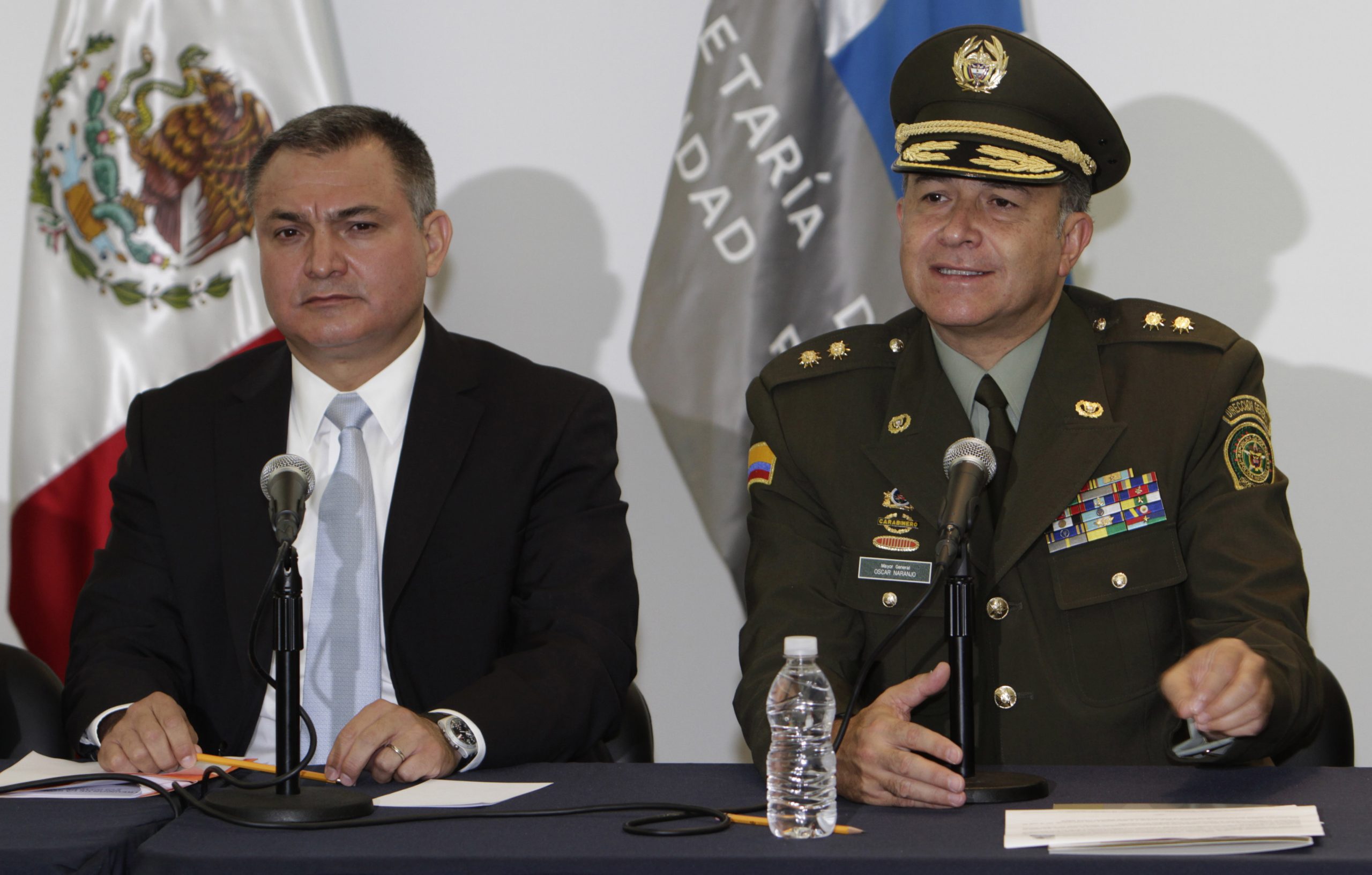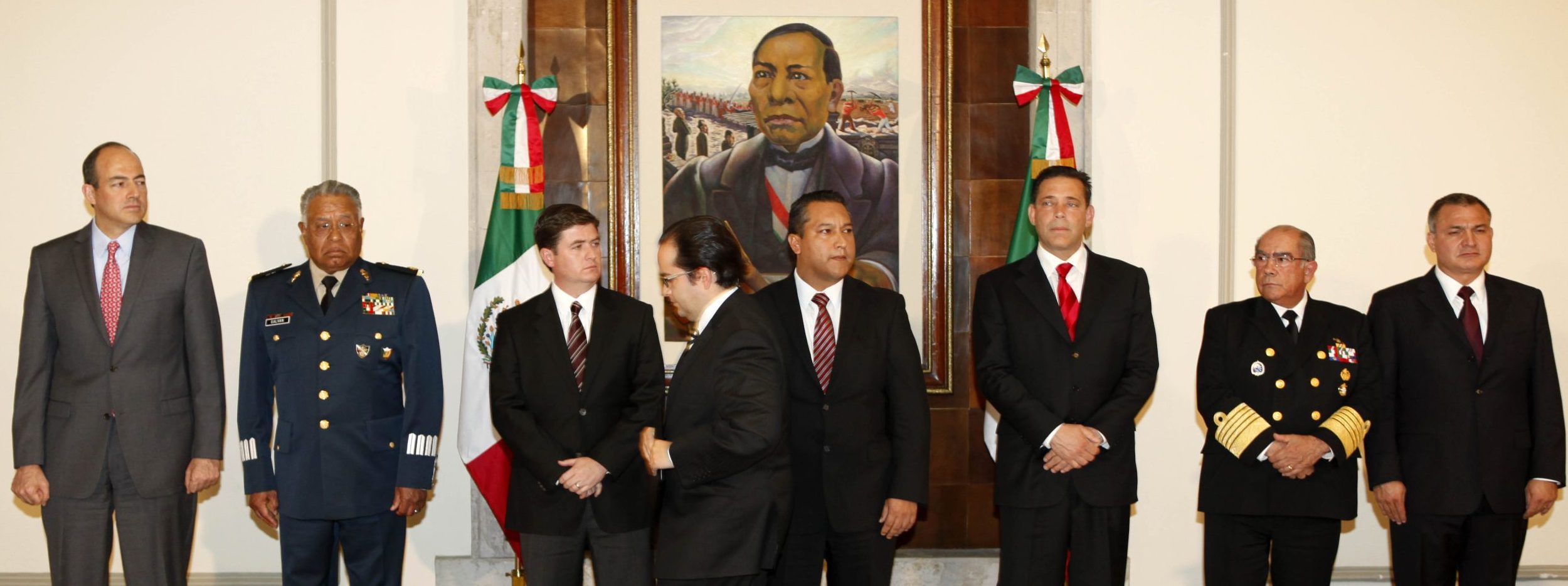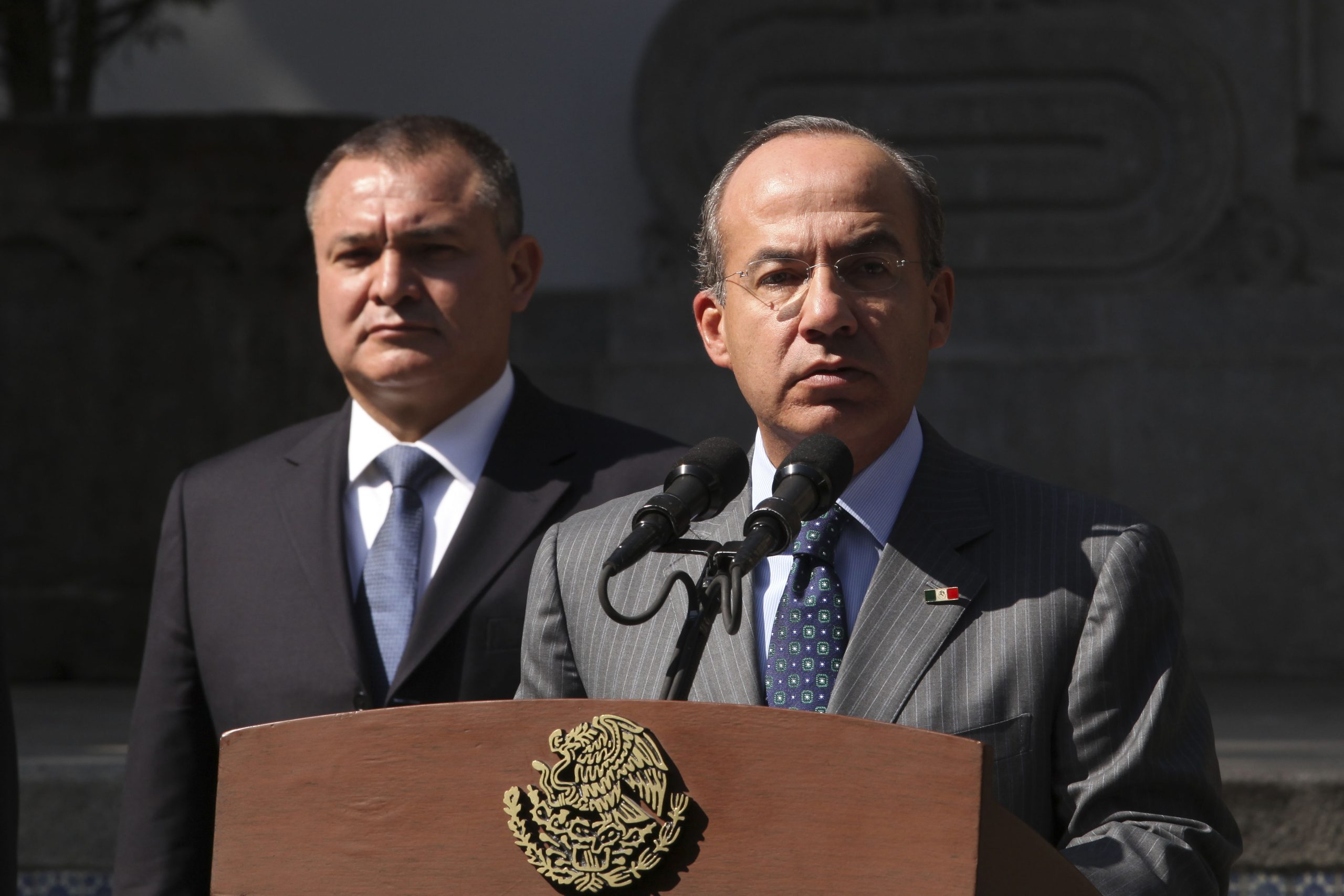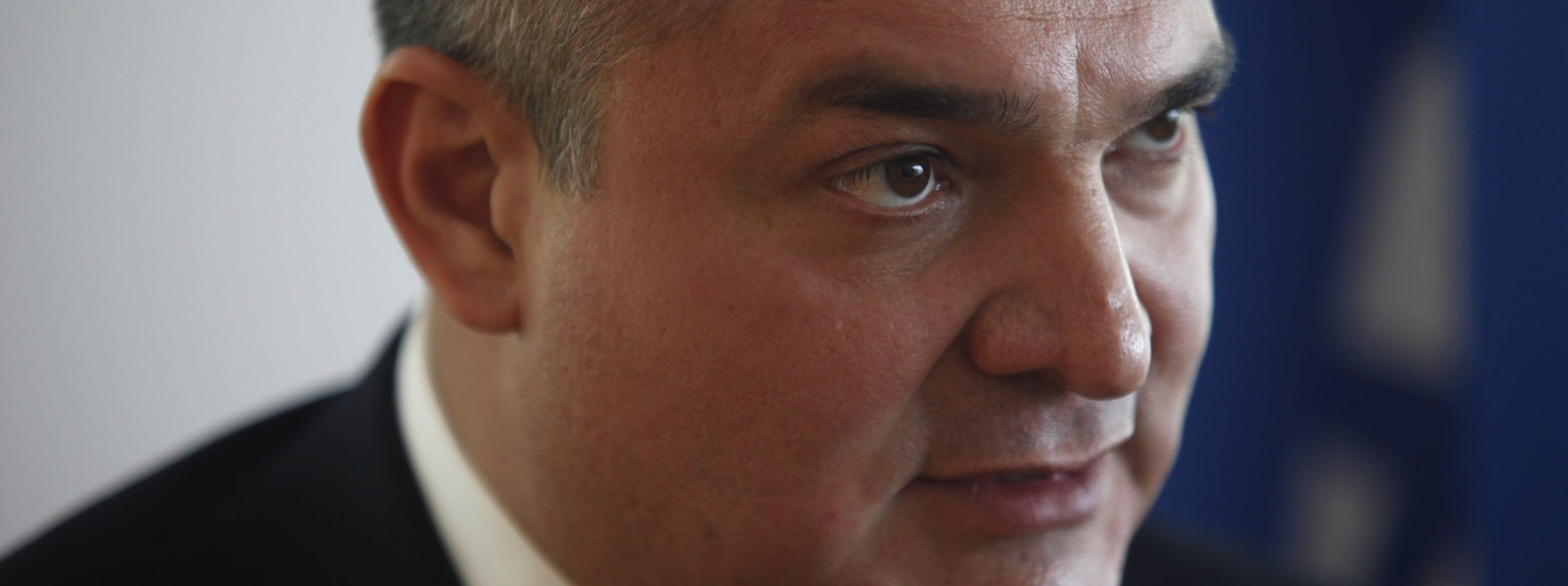
Government
The DEA trusted the Mexican top security boss. Now, he is accused of working for “El Chapo”
Table of contents
Genaro García Luna was the architect of the Mexican “war on drugs” and, for more than a decade, the closest ally in Mexico of the DEA. In a few weeks, he will face a trial in New York City for drug-trafficking. Futuro Investigates’ Executive Producer and Emmy Award winner Peniley Ramírez has investigated García Luna for 10 years. Now, alongside Pulitzer Prize winner Maria Hinojosa, she co-hosts “USA v. García Luna,” the latest podcast by Futuro Investigates. It is about García Luna, the DEA, and the “war on drugs.”
Genaro García Luna was, at one point, one of the most powerful men in Mexico. He was considered untouchable. High-ranking DEA officers used to call him “the Mexican Hoover.” He was acclaimed by U.S. diplomats and feared by colleagues, activists, and journalists. He was second to the president in managing security issues. The DEA, the CIA, and the FBI gave him awards and recognitions. Now, he is in the federal detention center in Brooklyn, awaiting trial. He is accused of helping Joaquín “El Chapo” Guzmán smuggle more than 50 tons of cocaine from Mexico into the U.S.
His story connects the “war on drugs,” the U.S. government, and the Sinaloa cartel, one of the most powerful criminal organizations worldwide. And it goes beyond him. It is a story about how the U.S. government picks its allies and supports them, even after accusations of corruption and misconduct.
“He was a very pro-DEA individual. He was very supportive of drug-control efforts. I never saw that he compromised any investigation or operation,” Mike Vigil, the DEA’s former head of international operations, said.
García Luna worked closely with the DEA from 2001 to 2012, the same years when he is now accused of collaborating with “El Chapo.” He is charged with accepting more than 50 million dollars in bribes from the Sinaloa Cartel.
The allegations state that García Luna gave the cartel safe passage for its drug shipments, provided them with sensitive information about investigations against them, and also with data about rival cartels. They claim that he “placed other corrupt officials in positions of power in certain areas of Mexico controlled by the Sinaloa Cartel.”
Vigil was not the only high-ranking American officer who trusted García Luna with equipment, information, and millions of dollars from U.S. taxpayers in those years.
When Seth D. Ducharme, former acting U.S. district attorney of New York, announced the indictment against García Luna in 2020, he thanked the DEA offices in New York and Houston for their work on investigating him. In contrast, years before, when the alleged criminal activities happened, García Luna was managing millions of U.S. dollars that went to Mexico to prevent drug trafficking on the southern border.
Between 2001 and 2006, García Luna led the Federal Intelligence Agency, the equivalent to the FBI in Mexico. Then, in 2006, he was appointed Secretary of Public Security, an agency that controlled the Mexican equivalents of the NSA, the DEA, and the federal prison system.
Mexico declared a “war on drugs” in late 2006. Since then, the U.S. government has sent more than 3.3 billion dollars through a bilateral agreement called the Merida Initiative.
“As secretary of public security, [García Luna] did very well. He got a lot of equipment through the plan [the Merida Initiative], and what Mexico needed, like helicopters, training for federal police flights, and other agencies. He was the architect of the security reforms for Mexico,” Vigil added.
Public records show how the “war” has been a failure. About 360,000 people have been killed in Mexico since 2006. The Mexican cartels now serve markets on five continents and have been declared by authorities from different countries as global enterprises. In the U.S., the drug crisis was declared a national emergency. More than 932,000 people died by overdoses in the U.S. between 1999 and 2020.
In Mexico, for years, García Luna led those failed efforts to win the “war.”
Vigil offered a possible reason: “García Luna [and former president Felipe Calderón] developed what they called the ‘kidnapping strategy.’ It consisted of eliminating the cartel leaders. Thus, they captured 25 of 36. But I think they didn’t realize that by getting rid of the biggest bosses, the cartels would fragment, and that would create more violence.”
Documents from the Mexican federal audit show that some of the equipment donated from the U.S. was recorded as “lost.” The Mexican press also found that García Luna spied on politicians and spent 11 million dollars producing a television series to portray himself as a hero. In the series, they used police officers as extras, actual police buildings as locations, and a helicopter donated by the U.S. to film action scenes.
Before leaving office, García Luna faced criticism because he lived in a luxurious residence, even when he had the middle-class salary of a public servant. He was summoned to the Mexican Congress to answer about his fortune and allegations that officers under his command were corrupt and violated human rights. He denied any corruption or misconduct.
Even after these scandals, he obtained a U.S. investment visa and moved to a $3.3 million house in Miami in December of 2012.
Six years later, during the trial of “El Chapo” Guzmán, a former Sinaloa cartel leader testified that he gave García Luna millions of dollars in bribes when he was a top Mexican official and a U.S. government ally. In December of 2019, García Luna was arrested in Texas and accused of conspiring with the Sinaloa cartel. He pleaded not guilty.
A frustrated soccer player
García Luna was born in 1968 in Mexico City. He grew up in a traditional Mexican Catholic family, living in a working-class neighborhood and helping his father with the family business: a small moving company. He dreamt of becoming a professional soccer player, but never achieved it. In the late 1980s, he was hired at the Center for Investigation and National Security, the equivalent of the CIA in Mexico. It was a new institution, resulting from a strong push by the U.S. to professionalize the security in Mexico after the killing of DEA agent Enrique “Kike” Camarena.
Former colleagues said that García Luna was fascinated with everything American, from CSI to Donna Summer, and that he was also obsessed with power. They remember him carrying his bosses’ briefcase and opening the doors for them. In private conversations with superiors, former coworkers remembered him constantly repeating, “Yes, sir.”
He started as a security agent, sort of a low-ranking spy. Then, within just a decade, he rose up to lead Mexico’s Federal Investigation Agency. And, six years after that, he was appointed by then-President Calderón as Secretary of Public Security.
“He had a talent for gaining the trust of presidents. He did it with Vicente Fox and Felipe Calderón. He had information from many people and many officials. Somehow, that pleased them,” Javier Herrera Valles, a former high-ranking Mexican federal security officer that worked under him, said.
Herrera Valles added that García Luna allowed U.S. agents to interrogate detainees, and gave them access to seized drugs, even when that was illegal in Mexico.
“He treated them very well,” he said.
A high-profile case
García Luna is the highest-ranking Mexican official ever to face trial in the U.S. This is also the most influential case derived from the trial against “El Chapo” Guzmán.
However, García Luna’s lawyer, César de Castro, wrote in a document submitted to the court that the upcoming trial will not attract headlines in the mainstream American press, as his client is “virtually unknown” in the U.S.
The DEA declined an interview for this investigation, and De Castro didn’t respond.
The court documents of the upcoming trial mention that the N.Y. prosecutors have millions of pages of investigations about García Luna conducted by a number of federal and local agencies. They also announced that several witnesses would testify against him.
“He was always willing to do too many things for the DEA,” Vigil said.
So far, this case does not question the DEA’s relationship with García Luna.



